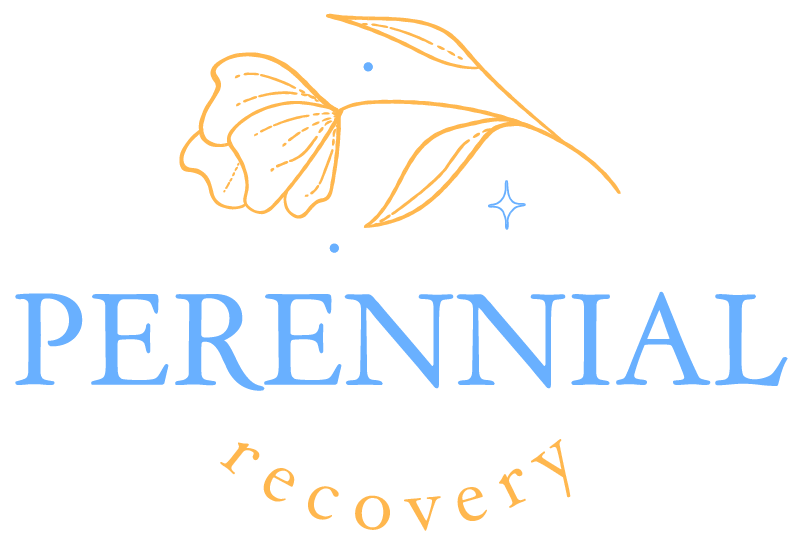Street Drugs: Understanding the Risks
When it comes to street drugs, understanding the risks associated with their use is crucial for individuals to make informed decisions about their health and well-being. This section will delve into the definition of street drugs, common types of street drugs, and address some misconceptions and realities surrounding them.
Definition of Street Drugs
Street drugs refer to illegal substances that are sold and distributed illicitly on the streets, often without any regulation or quality control. These drugs are typically obtained through illegal means and may pose significant risks to the users’ physical and mental health.

Common Types of Street Drugs
There are numerous types of street drugs available, each with its own set of effects and risks. Some of the most common street drugs include:

It’s important to note that the names listed above are common street names associated with these drugs and may vary depending on the region or location.
Misconceptions and Realities
There are several misconceptions surrounding street drugs that can contribute to misunderstandings and potentially dangerous behaviors. It is essential to address these misconceptions and present the realities associated with street drug use.
One common misconception is that street drugs are harmless or safer than prescription medications. In reality, street drugs are often produced in unregulated environments and may contain unknown substances or impurities that can have serious health consequences.
Another misconception is that occasional or recreational use of street drugs is not harmful. The truth is that even sporadic use can lead to a range of short-term and long-term physical and mental health issues. Additionally, street drugs carry a high risk of addiction and dependency, making it difficult for individuals to control their usage.
Understanding the risks associated with street drugs is vital for individuals to make informed decisions about their own health and safety. By dispelling misconceptions and providing accurate information, we can empower individuals to make healthier choices and seek the support they need to overcome drug-related issues.
The Effects of Street Drugs
Understanding the effects of street drugs is crucial for recognizing the risks associated with their use. Street drugs can have both short-term and long-term effects on the individual’s physical and mental health. Additionally, there is a significant risk of addiction and dependency that comes with prolonged drug use.
Short-Term Effects
Short-term effects refer to the immediate impact that street drugs have on the body and mind. These effects can vary depending on the specific drug used. Here are some common short-term effects associated with street drug use:

It’s important to note that these short-term effects are not only unpredictable but can also have serious health consequences, including overdose or even death.
Long-Term Effects
Long-term effects are the consequences that can occur with continued use of street drugs over an extended period. Prolonged drug use can lead to various physical and mental health issues. Here are some examples of long-term effects associated with street drug use:

Long-term effects can have a significant impact on an individual’s overall well-being and quality of life. It’s essential to understand these risks before engaging in street drug use.
Risks of Addiction and Dependency
One of the most concerning aspects of street drug use is the risk of addiction and dependency. Addiction is a chronic condition characterized by compulsive drug-seeking behavior despite negative consequences. Dependency refers to the body’s adaptation to the drug, leading to withdrawal symptoms when the drug is discontinued.
The risk of addiction and dependency varies depending on the drug used and individual factors. Some drugs, such as opioids and methamphetamine, have a higher potential for addiction than others. Continued drug use can lead to a cycle of cravings, tolerance, and withdrawal symptoms, making it difficult to quit without professional help.
Recognizing the short-term and long-term effects of street drugs, as well as the risks of addiction and dependency, is essential for promoting awareness and preventing drug abuse. It’s crucial to seek help and support if you or someone you know is struggling with street drug use.
Factors Contributing to Drug Use
Drug use is a complex issue influenced by various factors that can contribute to its occurrence. Understanding these factors is crucial in addressing the root causes of drug use and developing effective prevention strategies. The following sections explore three key factors that contribute to drug use: social influence, environmental factors, and psychological and emotional motivations.
Social Influence
Social influence plays a significant role in drug use, as individuals are influenced by the attitudes, behaviors, and norms of their social circle. Peer pressure, in particular, can be a powerful motivator for experimentation with drugs. The desire to fit in, gain acceptance, or be part of a particular group can lead individuals to engage in drug use, even if they initially have reservations.
Moreover, exposure to drug use through family, friends, or media can normalize and desensitize individuals to the risks associated with drugs. This normalization can further contribute to their decision to experiment with or use drugs.
Environmental Factors
Environmental factors also have a significant impact on drug use. Certain environments, such as neighborhoods with high crime rates or limited access to education and employment opportunities, can increase the likelihood of drug use as individuals may turn to drugs as a coping mechanism or a means of escape from challenging circumstances.
Additionally, the availability and accessibility of drugs in a particular environment can influence drug use. Areas with high drug availability or where drugs are prevalent may create a greater temptation for individuals to engage in drug use.
Psychological and Emotional Motivations
Psychological and emotional factors play a crucial role in drug use. Many individuals turn to drugs as a way to cope with stress, anxiety, depression, or other emotional challenges. Drugs may provide temporary relief or a sense of escape from negative emotions, leading individuals to rely on them as a coping mechanism.
Furthermore, underlying mental health conditions, such as substance use disorders or untreated trauma, can contribute to drug use. These conditions can create a vulnerable state where individuals may seek self-medication through drugs.
Understanding these contributing factors is essential in addressing drug use effectively. By focusing on prevention efforts that address social influences, improve environmental conditions, and provide support for psychological and emotional well-being, we can create a healthier and safer society. Through education, community programs, and promoting healthy alternatives, we can empower individuals to make informed choices and reduce the prevalence of drug use.
Recognizing the Signs of Drug Use
When it comes to identifying drug use, recognizing the signs and symptoms is essential. By understanding the behavioral, physical, and social indicators, you can take appropriate action and provide support to those in need. Here are some key signs to watch out for:
Behavioral Changes
Drug use often leads to noticeable changes in a person’s behavior. These changes can vary depending on the type of drug used, but some common behavioral signs include:
- Sudden and unexplained mood swings
- Aggressive or violent behavior
- Increased secrecy and withdrawal from social activities
- Changes in sleep patterns, such as insomnia or excessive sleepiness
- Loss of interest in hobbies or activities once enjoyed
- Neglecting responsibilities at work, school, or home
It’s important to remember that behavioral changes alone do not confirm drug use, but they can be indicative of a problem and should be taken seriously.
Physical Signs
Physical signs of drug use can manifest in various ways. While the specific signs may differ depending on the drug used, some common physical indicators include:

It’s important to note that physical signs can vary depending on the drug, dosage, and individual response. If you observe any concerning physical changes in someone, it’s crucial to approach the situation with care and seek professional help if needed.
Social and Financial Impact
Drug use often has a significant impact on a person’s social and financial well-being. Some signs that may indicate drug use include:
- Changes in social circles and spending time with new and unfamiliar individuals
- Neglecting personal relationships and responsibilities
- Frequent borrowing of money or financial difficulties, despite no apparent change in income or expenses
- Legal problems, such as arrests or involvement in criminal activities to support the drug habit
The social and financial consequences of drug use can be devastating for individuals and their loved ones. Recognizing these signs can help prompt interventions and support to address the underlying issues.
By being aware of the behavioral, physical, and social signs of drug use, you can play a vital role in recognizing when someone may be struggling with drug addiction. It’s important to approach the situation with empathy, understanding, and a willingness to offer support and resources to those in need.
Seeking Help and Support
When it comes to drug use and addiction, seeking help and support is crucial for individuals who want to overcome their struggles. There are various treatment options and support resources available to assist those affected by street drugs. Additionally, it’s important to address and overcome the stigma and barriers associated with seeking help.
Treatment Options
Finding the right treatment option is essential for individuals struggling with drug addiction. Here are some common treatment options available:

It’s important to remember that treatment should be tailored to individual needs and may require a combination of approaches for the best outcomes. Consulting with healthcare professionals or addiction specialists can help determine the most suitable treatment option.
Support Resources
Various support resources are available to individuals seeking help for drug use and addiction. These resources provide guidance, counseling, and assistance throughout the recovery process. Some common support resources include:

These support resources can play a vital role in providing individuals with the necessary tools and encouragement to overcome addiction and maintain long-term recovery.
Overcoming Stigma and Barriers
Unfortunately, stigma and barriers often prevent individuals from seeking the help they need. Overcoming these challenges is essential to ensure that those struggling with drug addiction can access the support and treatment they deserve. Here are some strategies for addressing stigma and reducing barriers:
- Educating the public and raising awareness about addiction as a complex health issue rather than a moral failing.
- Promoting empathy and understanding by sharing stories of recovery and highlighting the successes of individuals who have overcome addiction.
- Providing education and training to healthcare professionals, law enforcement personnel, and community members to reduce stigmatizing attitudes and behaviors.
- Advocating for policy changes that support addiction treatment, increase access to healthcare, and reduce barriers to seeking help.
By fostering a compassionate and supportive environment, we can encourage individuals affected by drug addiction to seek the help they need without fear of judgment or discrimination. It is vital to create a society in which everyone can access the care and support necessary for their recovery journey.
Spreading Awareness and Prevention
Creating awareness about the risks and dangers associated with street drugs is crucial to prevent drug abuse and protect individuals from the harmful consequences. Various initiatives and programs are dedicated to spreading awareness and promoting prevention strategies. This section focuses on education initiatives, community support programs, and the promotion of healthy choices and alternatives.
Education Initiatives
Education plays a vital role in preventing drug abuse by providing individuals with the knowledge and understanding they need to make informed decisions. Education initiatives aim to raise awareness about the risks and consequences of street drugs, as well as provide factual information about their effects on physical and mental health.
These initiatives often include targeted campaigns in schools, colleges, and community centers. They involve the distribution of educational materials, such as pamphlets and brochures, that highlight the dangers of street drugs. Workshops and seminars are also conducted to provide interactive platforms for discussions and learning.
Community Support Programs
Community support programs are essential in creating a supportive environment for individuals struggling with drug abuse or at risk of developing drug-related issues. These programs provide a range of services, including counseling, support groups, and rehabilitation programs. They aim to assist individuals in overcoming addiction, addressing underlying issues, and reintegrating into society.
Support programs often collaborate with healthcare professionals, counselors, and social workers to provide comprehensive care. They offer a safe space for individuals to seek guidance, share experiences, and receive the necessary support to lead a drug-free life.
Promoting Healthy Choices and Alternatives
Promoting healthy choices and alternatives is an effective way to prevent drug abuse. By providing individuals with healthy outlets for stress relief, recreation, and personal development, the likelihood of turning to street drugs can be reduced. Encouraging positive coping mechanisms and alternative activities helps individuals build resilience and make choices that prioritize their well-being.
Promoting healthy choices may include advocating for physical activities, sports, art, music, and other forms of creative expression. These activities not only provide constructive outlets but also help individuals build confidence, develop social connections, and improve overall mental health.
In addition, promoting alternatives to street drugs involves creating accessible resources, such as helplines, hotlines, and online platforms, where individuals can seek guidance, information, and support. These resources ensure that individuals have access to immediate help when needed.
By implementing education initiatives, community support programs, and promoting healthy choices and alternatives, we can work together to prevent drug abuse and protect individuals from the risks associated with street drugs. Spreading awareness and taking proactive measures are essential steps in building healthier and safer communities.
Sources
https://www.webmd.com/mental-health/addiction/street-drugs-risks
https://www.samhsa.gov/adult-drug-use
https://www.nidirect.gov.uk/articles/risks-taking-drugs




